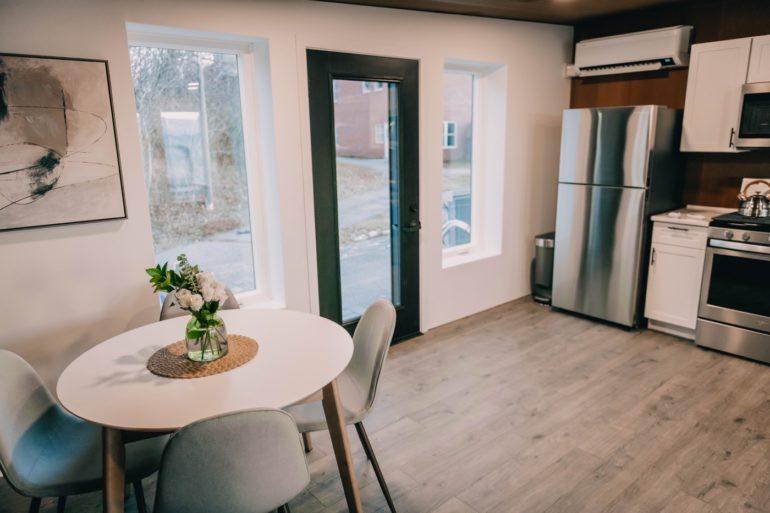The 600-square-foot prototype home features 3D-printed floors, walls and roof of wood fibers and bio-resins. The house is fully recyclable and highly insulated with 100% wood insulation and customizable R-values. Construction waste was nearly eliminated due to the precision of the printing process.
The technology is designed to address labor shortages and supply chain issues that are driving high costs and constricting the supply of affordable housing. Less time is required on-site building and fitting up the home due to the use of automated manufacturing and off-site production. Printing using abundant, renewable, locally sourced wood fiber feedstock reduces dependence on a constrained supply chain. These materials support the revitalization of local forest product industries and are more resilient to global supply chain disruptions and labor shortages.
Using the advanced manufacturing processes and materials developed at UMaine, future low-income homes can be customized to meet a homeowner’s space, energy efficiency and aesthetic preferences. Importantly, as the manufacturing technology and materials production are scaled up, homebuyers can expect faster delivery schedules.
The prototype is currently sited on a foundation outside ASCC, equipped with sensors for thermal, environmental and structural monitoring to test how BioHome3D performs through a Maine winter. Researchers expect to use the data collected to improve future designs. BioHome3D was printed in four modules, then moved to the site and assembled in half a day. Electricity was running within two hours with only one electrician needed on site.
“Many technologies are being developed to 3D print homes, but unlike BioHome3D, most are printed using concrete. However, only the concrete walls are printed on top of a conventionally cast concrete foundation. Traditional wood framing or wood trusses are used to complete the roof,” said Dagher, ASCC executive director. “Unlike the existing technologies, the entire BioHome3D was printed, including the floors, walls and roof. The biomaterials used are 100% recyclable, so our great-grandchildren can fully recycle BioHome3D.”
According to the United Nations Environment Programme, buildings account for nearly 40% of global carbon emissions. Sustainably grown wood fiber is a renewable resource that captures carbon during the tree growth cycle. BioHome3D may be thought of as a carbon storage and sequestration unit during its lifetime and after it is recycled.
The successful print of BioHome3D builds on the ASCC’s demonstrated excellence in advanced manufacturing, design and modeling. The prototype was printed on the world’s largest polymer 3D printer, which, in 2019, produced the world’s largest 3D-printed boat.
World’s first 100% bio-based house
Each module is 100% additively manufactured- floors, walls, and roof- which differentiates this house from current commercial 3D-printed homes. Local wood fiber and bio-resin materials developed by the Hub & Spoke partnership. Walls, floors, and roof are all printed, unlike existing 3D-printed housing projects.
600 square foot single-family home
Highly automated, off-site, modular assembly, designed as separate, printed modules for ease of transportation and assembly. The materials used are 100% recyclable and the house is insulated with a combination of wood fiber insulation and blown-in cellulose insulation.
University of Maine Biohome3d
Photos Courtesy of University of Maine












